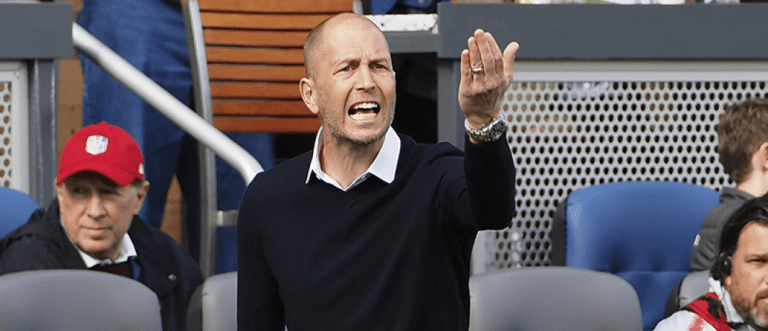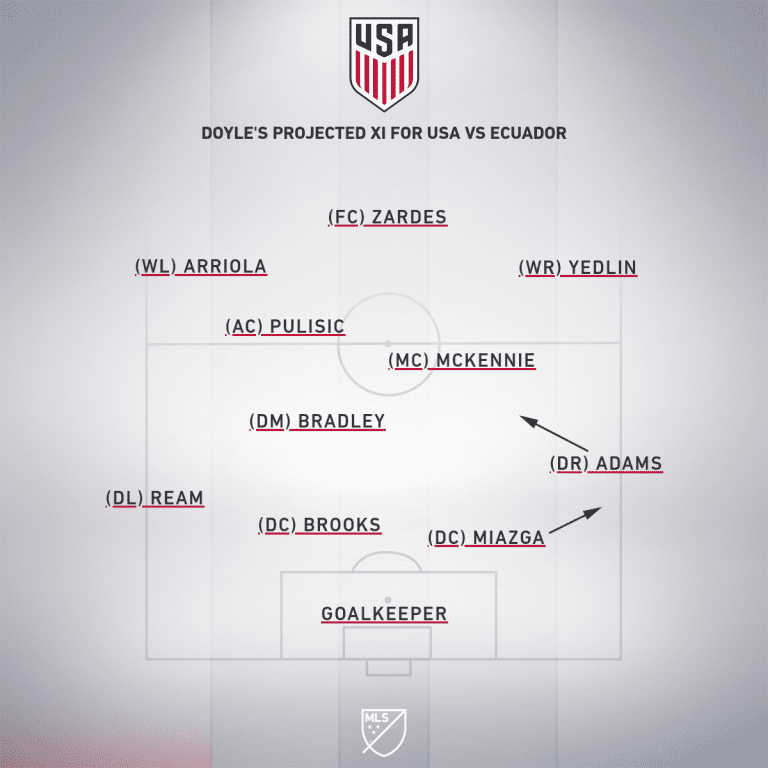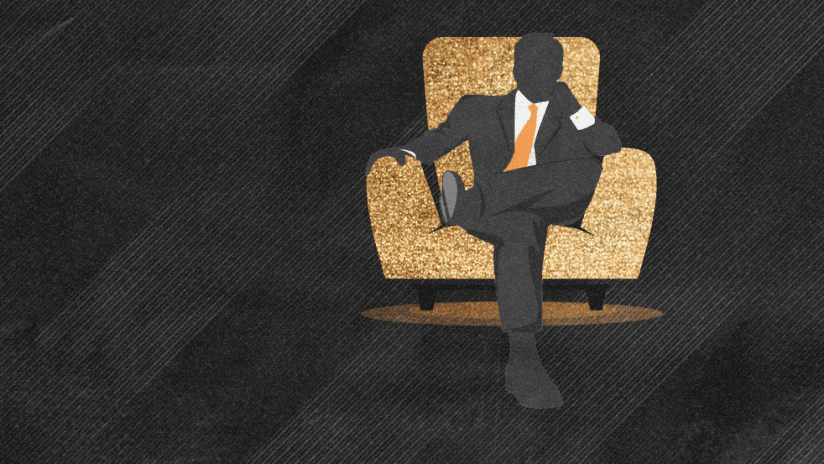Before we dive into the tactics, before we parse apart the XI, before we even get started, we have hit pause for a second and think about this roster that Gregg Berhalter called in for the upcoming US national team games, on Thursday against Ecuador and next Tuesday against Chile.
We have to do this because for the better part of a decade the whole US approach to Game No. 2 derived zero context from what happened in Game No. 1, and provided zero context for Game No. 3. Principles of play established over a week in March would be tossed into the woodchipper come May. What was learned on Tuesday could and would be irrelevant by Wednesday.
And we're now in an era that's the opposite of that. We're now in an era where Game No. 1 has very specific meaning to Berhalter and his staff, and a very specific impact on how they approach and what they try to accomplish in Game No. 2.
Berhalter's approach doesn't just demand "context." Rather, context is the bedrock of what he's trying to build game after game, camp after camp, session after session. The data acquired on Thursday will have immense bearing on what happens the following Tuesday.
Bear that in mind when considering the roster, which includes 13 holdovers from January's camp (the number was originally 14, but Zack Steffen has withdrawn with a minor knock). A lot of those holdovers drew the ire of certain US fans on social media and in comments sections around the internet, and here is the reason: There is a zero percent chance that each and every one of those 13 holdovers are amongst the 23 best or most talented players in the current US pool. Some of them surely are, but many of them are not.
But each and every one of them – all of them, together and separate – serves a purpose beyond their own, individual skills: They are there to provide context. They are there to make sure that the principles Berhalter taught over three weeks in January are imparted by players who understand them (and have executed them on the field) to players who have not.
This is an approach to teaching the complex, team-wide concepts that I didn't really have the mental clarity and wherewithal to put into words until I listened to the latest episode of the Scuffed podcast, which I highly recommend. Then Sebastian Lletget, one of the shining stars of the January camp, basically made the same point on Wednesday when talking to the LA Times.

Gregg Berhalter | USA Today Sports Images
“It’s a challenge for all of us, especially for guys that are just hearing about it and learning and looking at the drawing board and seeing movements and fluidity and creativity,” the LA Galaxy midfielder said. “You can’t just switch off when you walk off the field. You’ve got to keep thinking about it and keep talking to your teammates and figure how can we make this work?”
Players from January aren't there just to learn, and compete and to execute, but also to teach. And let's face it, there are three players who need to learn Berhalter's concepts (and buy into them) in order for the US to approach its potential: Christian Pulisic, Weston McKennie and Tyler Adams.
"[Berhalter's] very focused on all the details of the game. I've been amazed the first few days with just how much information he's got across, and how he wants every guy to be on the same page and have a perfect understanding of how we want to go into the game," Pulisic said to ESPN.com this week.
"I think that's all I'd say about what's impressed me the most, how much he's taken pride in really making sure every single guy understands the system and we feel 100 percent ready."
Putting Pulisic, McKennie and Adams, as well as presumed starting CBs John Brooks and Matt Miazga, into an environment where there is a clear path for them to learn the system is head-and-shoulders more important than the marginal talent differential between some of the players who were called in and many of the players who were left off. Teaching five new, key players is on such a limited timeline is hard enough. Now do it with eight, or 10 or 12.
No. I'd rather have the holdovers who understand the patterns Berhalter wants on the field with those guys, because the holdovers are the ones who will provide the context Pulisic et al need to execute what the system demands.
A reminder of the roles in Berhalter's system when in possession:
That is almost entirely correct, and gives a good idea the roles of most of the players. I'd only make two adjustments:
- The right winger should be called the "field stretcher," as he's asked to do little in possession but stay high and wide to pin back the opposing backline
- The right and left CBs are called "line breakers," as they are often asked to break lines with their distribution and play directly through the midfield to the linker or creator
It is complex. It is unorthodox. It is a system that rapidly changes shape – a 4-3-3 when on the ball in their own end, a 4-4-2 when defending in the mid-block, a 4-2-3-1 when pressing, and that old-fashioned-but-entirely-new WM when on the ball in possession.
A few notes:
• Berhalter has already said Pulisic will be the left-sided No. 10, the "creator" in the above graphic. Good. That is the most important attacking position on the field, and while it's arguably not Pulisic's best position, A) it's the one he wants to play, and B) he's almost certainly the best player in the entire pool for that role.
• McKennie's going to be the "linker" above. Hell yeah. McKennie's an actual soccer player who's not been asked to play actual soccer with Schalke – the most brutal, anti-soccer team in the world – all year, and has been bounced from center forward to right midfield to attacking midfield to right back and to left center back all year long. Please make it stop.
I can not wait to see him in his natural role. My money is on him being the breakout star of the camp.
• Adams will own the hybrid role. My colleague Bobby Warshaw wrote 1,000 words on why and how it will work, and why it's probably the right move. Berhalter himself provided his rationale for putting Adams (who, let's all remember, was the best right back/right wingback in the league as an 18-year-old in 2017) out there:
You may disagree with it. You may expect it to fail. But at least there's thought being put into this decision. At least there's some context that comes into play for how and why the players are arrayed as they are.
• Transitioning from the WM to a solid defensive block will be telling. There are times where it feels like the whole of the modern game is about transitions, and it's a race to see who can get pressure to the ball first, or how quickly one team snaps into their shape. Given the complexity of the hybrid role Adams has been tasked with, it should be a challenge. But I think it's a role that was literally designed for him, and I expect him to succeed.
• One of the things to consider about the bullet point above is the defensive responsibility of the field stretcher, who will function more as an advanced wingback than a pure winger. Berhalter has said that DeAndre Yedlin – who's played mostly at wingback for Newcastle this year – is likely to be used at that spot, and while he hasn't said as much, I suspect that'll be Jordan Morris's residence as well. Corey Baird was the player of choice in January, and is back for these guys.
All three of these guy have serious recovery speed. If Adams gets caught out, whichever of the three is out there could/should act as a defensive failsafe.
• Tim Ream has been a very good player for a decade now, and is the best passing CB I've ever seen the US produce (apologies to Matt Besler). And yet no US coach has been able to weaponize that left foot of his.
Yet.
With all that in mind, here's my projected XI for the game against Ecuador:

We'll be on MLSsoccer.com and @MLS with Club & Country analysis both before and after the game. See you then.










